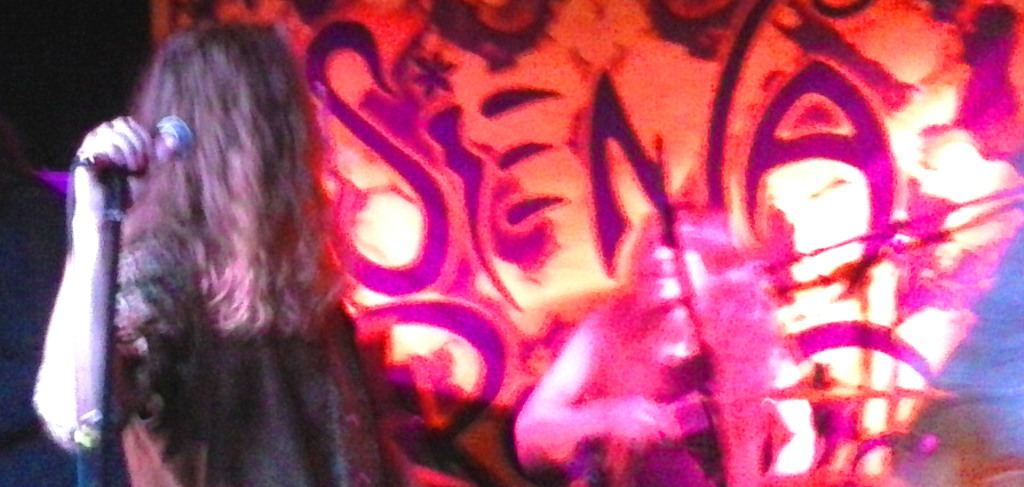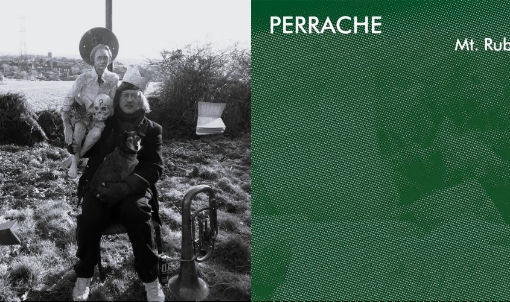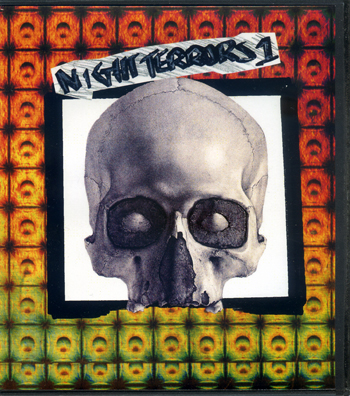 Brian Eno once famously stated that there were three crucial beats in the 1970s: Fela Kuti’s Afro-Beat, James Brown’s funk and Klaus Dinger’s NEU!-beat. The latter – a hypnotic, strict and Spartan 4/4 that Dinger initially christened the ‘lange gerade’ (‘long straight’) or ‘endlose gerade’ (‘endless straight’), and later referred to as the ‘Apache Beat’ – came to be virtually synonymous with entire canon of German music from the early to mid 1970s, the so-called ‘Krautrock’.
Brian Eno once famously stated that there were three crucial beats in the 1970s: Fela Kuti’s Afro-Beat, James Brown’s funk and Klaus Dinger’s NEU!-beat. The latter – a hypnotic, strict and Spartan 4/4 that Dinger initially christened the ‘lange gerade’ (‘long straight’) or ‘endlose gerade’ (‘endless straight’), and later referred to as the ‘Apache Beat’ – came to be virtually synonymous with entire canon of German music from the early to mid 1970s, the so-called ‘Krautrock’.
Klaus never dinged wrong, but he didn’t ding long, passing away far too early at the age of only 61, following a fatal heart attack in 2008. Having battled for much of the preceding few decades against Kafka-esque copyright and royalty Hell, the resultant penury and, not infrequently, his own former bandmates (including even brother Thomas), Dinger nonetheless kept recording, searching doggedly for the new millennial form he so fervently believed in. Dinger never mellowed either, remaining as waspish and uncompromising as he always had, no matter the long grey beard and angular cheekbones lending him a Gandalf-ian gravitas and wisdom.
Shortly after the turn of the 21st century, Dinger’s friend, the Japanese artist Nakao, introduced him to a wide circle of people in Düsseldorf’s vibrant Japanese artistic community, with this resulting in a swiftly-evolving set of personal and musical relationships. Dinger and several friends began cycling and camping together, spending time in the countryside whilst they discussed musical and artistic ideas. Eventually, once a suitably harmonic vibration had been established, Dinger began recording with his new friends at his two studios, on the coast at Zeeland and by the airport in Düsseldorf. Working sporadically between 2000 and 2006, Dinger saw the sessions as chance both to create music by those with a fine art, rather than necessarily a musical, background, and to pass on some of his creative and musical experience to a younger generation, a quest curtailed only by his premature death. After a not inconsiderable amount of work to finish off and sequence some of the outputs of these sessions, Grönland Records have now released their first proper fruit, Japandorf, a musical and lyrical exploration of Düsseldorf’s Japanese community. (Two predecessor albums, pre-Japandorf and VIVA Rimix 2010 are yet to be released.) Beginning with a typically Dinger-esque field recording of a city Straβenbahn (tram), the album launches straight into the utterly perfect pop of “Immermannstraβe,” proof – if proof be needs be – that if we didn’t live in such a fucking idiotic age, this would be surely number one instead of Justin Timberlake. Grafting the completely unmistakable Dinger style onto a Japanese musical tatami mat, the effect is not unlike a La Düsseldorf album being cut into a piece of vinyl that already contains a Shonen Knife LP. Each element is obviously evident, and maybe it shouldn’t work, but it undoubtedly does. Beautifully. Even when the material is discernibly unfinished, such as “Sketch No 1_b” (which reminds me curiously of some of Iggy Pop’s melancholic early 1980s moment, “Pumpin’ for Jill”), the effect is still delightful, and impresses that Dinger’s work wasn’t simply a time capsule from an era when der Bomber, Gerd Müller, was banging them in for West Germany, but a form that he was constantly seeking to update and keep in tune with evolving technology and musical tropes. Whatever Michael Rother’s feelings, NEU! 4 (latterly NEU! ’86), shows that, whereas many of his contemporaries had fallen into a terminally stagnant morass, Dinger was still trying to grasp a nettle that he felt was out there; parts of the NEU! 4 album sound uncannily like the nettle that Mouse on Mars would grasp almost a decade later.“Kittlebach Symphony” is a delicate and moving piece, redolent of Dinger’s white overall La Düsseldorf heyday, the twelve and a half minute “ChaCha 2008” rocks, rolls and squeals in your ear like being on the dancefloor when you want to stop but can’t – the future is calling indeed – and “Sketch No.4” could show any of the young pretenders on the racks in Rough Trade how it’s really done. With “Spacemelo,” ladies and gentlemen, we are really floating in zero gravity, and “Karnival” has all the irresistible ramshackle fun of The Juicy Fruits playing at a bar on the Ratinger Straβe. The album closes with the intimate, acoustic strumming of “Osenbe,” and a beautiful peel of the bells of the Andreaskirche, the St Andrew’s Church in central Düsseldorf.
With every man and his dog now peddling furiously around the reunion circuit for all they are worth (literally and metaphorically), it seems somewhat tragic that Dinger is no longer alive to revel in some of the adulation that would surely come his way from a comparable musical stroll around the modern circuit. That said, it’s hard to envisage him having much time for nostalgia, or standing smiling alongside Michael Rother as they bow together to the rapturous applause greeting the NEU! 2015 European tour. His steadfastly “Fuck you!” grumpiness, though, remains one of his most endearing features. Perhaps instead, go into your kitchen, turn up “Udon,” the superb homage to the joys of the thick Japanese wheat-flour noodle, and get busy with the kamaboko.
Bugger Bowie, V-signs to the Valentines – this is the comeback of the year.
-David Solomons-




One thought on “Klaus Dinger and Japandorf – Japandorf”
Out today…
“Grafting the completely unmistakable Dinger style onto a Japanese musical tatami mat, the effect… http://t.co/WmIwEUr1sI